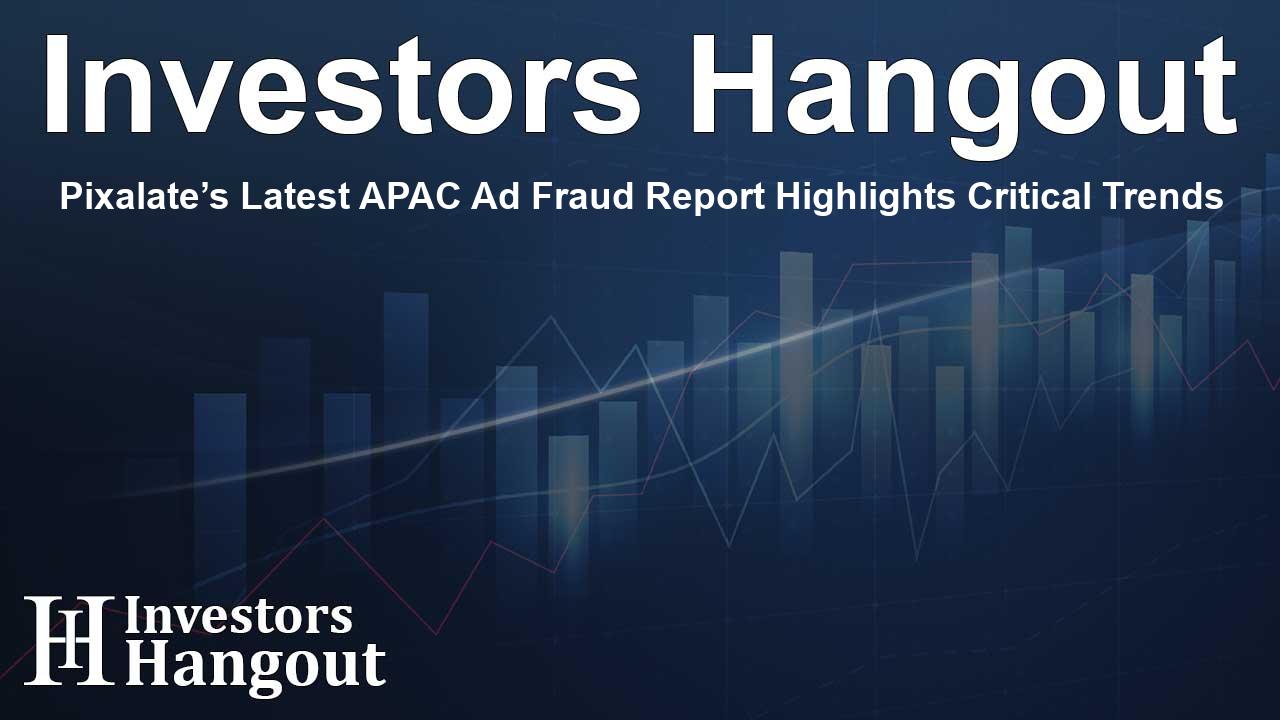Pixalate’s Latest APAC Ad Fraud Report Highlights Critical Trends

Pixalate Unveils Q1 2025 APAC Ad Fraud Benchmarks
In the rapidly evolving digital advertising landscape, understanding the challenges posed by ad fraud is crucial. Recently, Pixalate, a prominent global platform specializing in ad fraud protection and compliance analytics, released its findings for the first quarter of 2025. This report sheds light on the alarming rates of invalid traffic (IVT) and ad fraud prevalent in the Asia-Pacific (APAC) region, with striking insights that industry stakeholders need to consider.
China Faces the Highest Web Ad Fraud Rate
The report indicates that China holds the staggering title of the highest rate of web ad fraud in the APAC region, peaking at 19%. Such a high percentage reflects the complexities and challenges within the market, raising concerns for advertisers targeting consumers across various platforms. This level of fraud indicates a significant opportunity for improvement in ad technology and fraud detection systems.
Insights on Mobile App Risks in India
Meanwhile, India emerges as particularly vulnerable, especially through mobile applications, where the IVT rate skyrockets to 42%. This alarming statistic highlights the increasing reliance on mobile devices among users in India and the accompanying risks that advertisers face in this environment. With mobile apps being a key avenue for engaging customers, it is essential for companies to invest in secure advertising solutions.
Understanding the Broader APAC Landscape
The findings from Pixalate indicate that not only are advertisers facing challenges in China and India, but the entire APAC region is grappling with substantial levels of ad fraud across various devices. The report covers various categories, including desktop and mobile websites, mobile apps, and connected TV (CTV). Understanding these dimensions can equip advertisers with the knowledge to deploy targeted strategies.
Comprehensive Data Analysis
To arrive at these insights, Pixalate's data science team meticulously analyzed over 100 billion global programmatic advertising impressions. By examining multiple criteria like country, device type, and app category, the report delineates the nature of IVT and ad fraud, providing a well-rounded picture of the current landscape. Such rigorous data analysis is essential for advertisers looking to mitigate risks associated with ad fraud.
The Global State of Ad Fraud
On a broader scale, the report contributes valuable context with global statistics showing an 18% IVT rate on web traffic and 31% in mobile app traffic. These figures suggest that fraud is a pervading issue worldwide, transcending regional boundaries. As markets continue to expand and digital presence grows, the challenges of ensuring clean traffic and legitimate clicks will be paramount for success.
How to Combat Ad Fraud
As the digital advertising industry grapples with these challenges, proactive measures are needed to combat ad fraud. Advertisers should adopt advanced fraud detection technologies and continuously update their strategies to stay ahead of fraudsters. By prioritizing transparency and investing in reliable ad tech, companies can protect their investments and ensure the integrity of their campaigns.
Understanding the Importance of Compliance
On the compliance front, Pixalate remains a trusted partner among various stakeholders, including regulators, advertisers, and publishers. The company emphasizes the importance of navigating the complex landscape of digital ad compliance to foster trust and foster healthy industry growth.
Final Thoughts
The insights from Pixalate's Q1 2025 report serve as an essential resource for stakeholders in the digital advertising ecosystem. The significant rates of ad fraud in APAC, particularly in China and India, call for immediate attention and action. As the industry moves forward, ensuring stronger defenses against ad fraud will not only protect investments but also enhance the overall quality of digital advertising.
Frequently Asked Questions
What is the main finding of Pixalate's report?
Pixalate's report reveals that China has the highest web ad fraud rate in the APAC region at 19%, with India showing significant risks, especially through mobile apps with 42% IVT.
What devices are primarily affected by ad fraud in the APAC region?
According to the report, both desktop and mobile web, as well as mobile apps, are critically affected by ad fraud in the APAC region.
How does Pixalate gather its data?
Pixalate analyzes over 100 billion global programmatic advertising impressions to compile its reports on IVT and ad fraud in various countries and device categories.
Why is combating ad fraud important for advertisers?
Ad fraud undermines the effectiveness of advertising campaigns, leads to financial losses, and constitutes a violation of trust between advertisers and consumers.
What role does Pixalate play in the advertising ecosystem?
Pixalate specializes in ad fraud prevention, privacy compliance, and digital ad supply chain data intelligence, serving as a trusted partner for various stakeholders in the industry.
About The Author
Contact Addison Perry privately here. Or send an email with ATTN: Addison Perry as the subject to contact@investorshangout.com.
About Investors Hangout
Investors Hangout is a leading online stock forum for financial discussion and learning, offering a wide range of free tools and resources. It draws in traders of all levels, who exchange market knowledge, investigate trading tactics, and keep an eye on industry developments in real time. Featuring financial articles, stock message boards, quotes, charts, company profiles, and live news updates. Through cooperative learning and a wealth of informational resources, it helps users from novices creating their first portfolios to experts honing their techniques. Join Investors Hangout today: https://investorshangout.com/
The content of this article is based on factual, publicly available information and does not represent legal, financial, or investment advice. Investors Hangout does not offer financial advice, and the author is not a licensed financial advisor. Consult a qualified advisor before making any financial or investment decisions based on this article. This article should not be considered advice to purchase, sell, or hold any securities or other investments. If any of the material provided here is inaccurate, please contact us for corrections.
